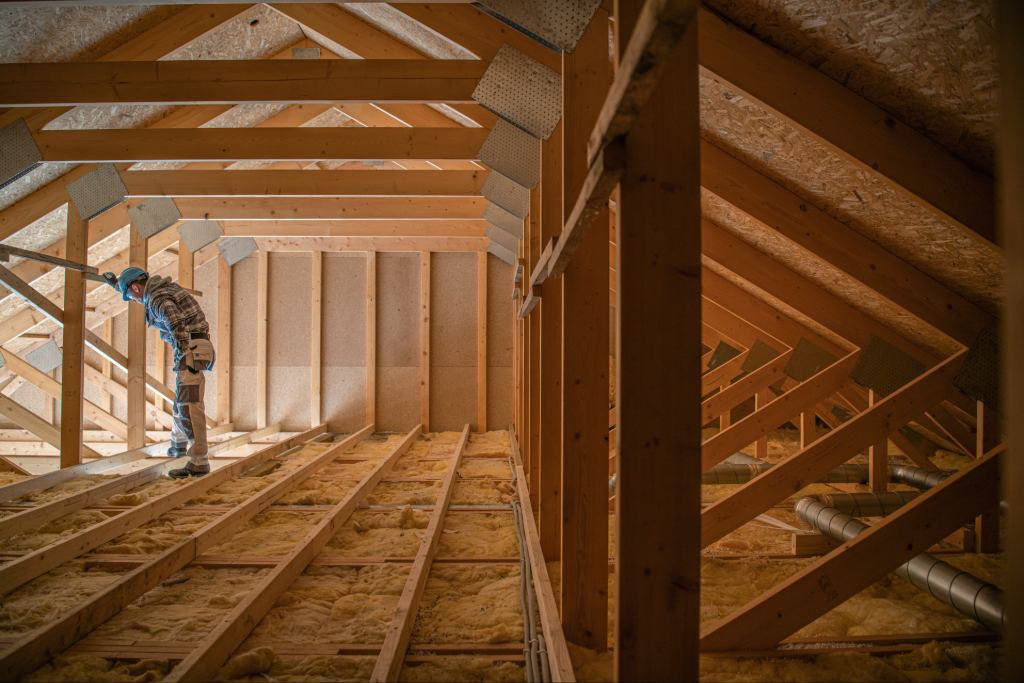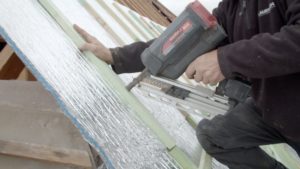Choosing the Best Insulation for Your Attic: A Practical Guide

Attic insulation is one of the most important aspects of building efficiency, yet it’s often overlooked. An uninsulated or poorly insulated attic can account for up to 25% of a building’s energy loss, making proper insulation critical for both comfort and cost savings.
But with so many options available, determining the best insulation for your attic can feel overwhelming. This guide provides a breakdown of key considerations and insulation types to help you make the right choice for your specific needs.
Why Attic Insulation Matters
An attic acts as the “thermal lid” of your building, regulating heat flow between the indoor environment and the outdoor elements. Without effective insulation, several problems can arise:
- Energy Loss: Heat escapes in the winter and enters in the summer, forcing HVAC systems to work harder, causing damage over time.
- Unstable Indoor Temperatures: Drafty areas or uneven heating and cooling can make spaces uncomfortable for anyone using them.
- Higher Costs: Inefficient insulation leads to wasted energy and can raise your utility bills.
- Moisture Risks: Poor insulation can lead to condensation, encouraging mold, mildew, and wood rot.
Proper attic insulation addresses these challenges, ensuring your building is energy-efficient, durable, and comfortable year-round.
Considerations When Choosing Attic Insulation
Climate Zone
Colder regions require insulation with high thermal resistance (R-value) to retain heat. On the other hand, warmer climates benefit from reflective insulation that repels radiant heat.
Existing Building Design
Retrofit projects may require flexible or blown-in insulation to fill irregular spaces, while new builds allow for a broader range of insulation options and configurations.
Moisture Levels
High-humidity areas demand insulation with vapor barrier properties to prevent condensation. Dryer climates may focus more on thermal performance than moisture control.
Budget
Cost-effective options like fiberglass batts provide good coverage on a budget. However, advanced solutions like reflective vapor barrier insulation may have higher upfront costs but deliver long-term energy savings.
Breaking Down the Types of Attic Insulation
Each type of attic insulation has its advantages. Understanding the options will help you choose the one that’s most effective for your needs.
Reflective Vapor Barrier Insulation
Reflective insulation is designed to address radiant heat transfer, which is responsible for up to 80% of heat gain in attics. The reflective surface repels radiant heat, while the built-in vapor barrier prevents moisture from accumulating in the attic. This option is usually best suited for hot climates, high-humidity environments, and projects focused on energy efficiency.
Reflective vapor barriers are also lightweight and easy to install while offering long-lasting performance for new builds or retrofits.
Fiberglass Batts
Fiberglass batts are one of the most widely used insulation materials due to their affordability and availability. Fiberglass fibers trap air, creating pockets of thermal resistance that provide both soundproofing benefits and a simple cut-and-fit solution. Because of the lowered upfront cost, this is usually best for budget-conscious installations in regions with moderate climate demands.
Spray Foam Insulation
Spray foam expands upon application, forming an airtight seal that fills gaps, cracks, and irregular spaces. Closed-cell spray foam provides both a high R-value and a barrier against air leaks and moisture infiltration, making it a good fit for complex attic designs or spaces requiring superior air sealing.
Rigid Foam Board Insulation
Rigid foam panels are dense, lightweight boards that provide continuous insulation. The foam boards minimize thermal bridging and add a high level of moisture resistance, especially for sloped attic ceilings or areas requiring continuous insulation coverage. Rigid foam board has a high r-value and good resistance to moisture and mold.
Choosing the Right Insulation for Your Attic Project
Start with an Inspection
- Evaluate your attic for gaps, air leaks, or existing insulation performance.
- Address structural repairs or moisture issues before installing new insulation.
Match the Insulation to Your Climate
- Cold climates benefit from thick, high-R-value materials like spray foam or rigid foam.
- Warm climates thrive with reflective vapor barrier insulation that repels heat.
Layer for Maximum Efficiency
Combining materials can provide superior performance. For example, use rigid foam for thermal resistance and reflective insulation for radiant heat control.
Focus on Moisture Control
If your attic is prone to condensation, prioritize insulation with vapor barrier properties, such as Quattro’s reflective vapor barrier insulation.
Why Quattro’s Reflective Vapor Barrier for Attics?
Choosing the best insulation for your attic can dramatically improve your building’s energy efficiency, comfort, and durability. From reflective vapor barriers to fiberglass batts and spray foam, each insulation type offers unique benefits for different needs. For a solution that combines radiant heat control, moisture protection, and long-lasting performance, Quattro’s reflective vapor barrier insulation is a top choice.
Our solution reduces radiant heat transfer, keeping attics cooler in summer and warmer in winter. Its integrated vapor barrier prevents condensation, protecting the attic from mold, mildew, and structural damage.
Even better, Quattro’s insulation is lightweight, durable, and easy to install, making it an excellent choice for both residential and commercial applications.


